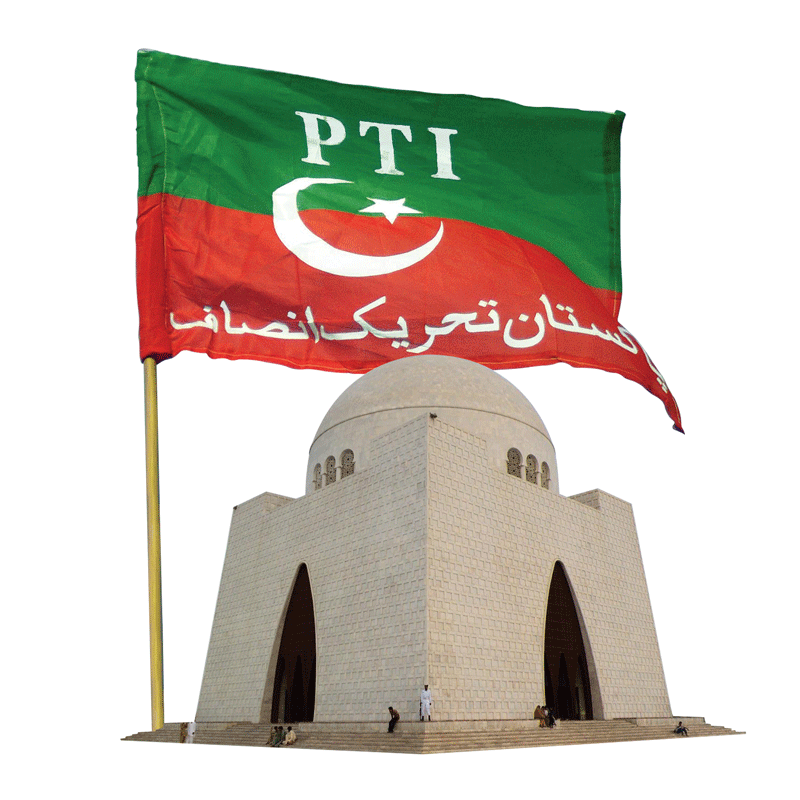Karachi’s New Avatar
By Ali Arqam | Newsbeat International | Published 7 years ago

Pakistan Tehreek-e-Insaf (PTI) has won 14 of the 21 National Assembly (NA) and 23 out of the 44 Sindh Assembly seats in the 2018 elections by garnering more than a million votes from Karachi alone, which constitutes nearly 70 per cent of the votes it polled overall in Sindh.
The PTI victory came as a major surprise for political observers and was startling even for PTI’s own circles. But if you analyse the results of the 2013 general elections in which PTI candidates in Sindh were runners-up on 15 of the NA seats and secured around 640,000 votes, this should have been expected. The PTI have doubled their votes in the city this time round, and increased their tally of NA seats to 14 from only one in 2013.
In 2013, the voter turnout was high and the victory margins of the winning candidates of the Muttahida Qaumi Movement (MQM) were huge. But given their tendency to manipulate the electoral process through strong-arm tactics on polling day, their victory was a foregone conclusion.
In the 2013 elections, the PTI could manage to win only one NA and three Sindh Assembly cconstituencies. Apart from NA-250 (and PS-113 and 114 that came under it), it won PS-93, a constituency in District West with a Pashtun majority. It created the impression that PTI had been supported in Karachi only by Pashtuns. This was vehemently denied by the party workers, who cited that in the 2013 general elections, the PTI got 80 per cent of its votes from MQM areas.
Another factor that went in favour of the MQM in the last election was the delimitation of constituencies, based on the 1998 population census in the Pervez Musharraf era. Most of the constituencies were demarcated in such a way that only two of the 20 constituencies had a Mohajir population that was less than a quarter of the total population. Some constituencies had a clear Mohajir majority, more than 60 per cent, whereas those where the Mohajirs were not in a majority, they still constituted a quarter to one-third of the total numbers, with the rest comprising Punjabis, Pashtuns, Seraikis, Hindko-speaking, Baloch and Sindhis. The MQM, therefore, literally got a walkover in the Mohajir-majority areas, while in constituencies with mixed ethnic groups, where the vote bank was split among political parties of different ethnicities, the MQM got the unified Mohajir vote and won these constituencies as well.
This time, the scenario was vastly changed. The 2018 general elections were held under the new delimitations based on the 2017 population census data. In the new delimitations, 11 of the 21 constituencies have a clear Mohajir majority while the other four consist of nearly 25 per cent Mohajir population. Political analysts had predicted that the constituencies with a clear Mohajir majority would be divided between the breakaway factions of the MQM – the MQM-P and the Pak Sarzameen Party (PSP), the Jamaat-e-Islami (JI) that was contesting elections under the banner of the Muttahida Majlis-e-Amal (MMA), and the PTI. But the results proved all the analysts wrong. MQM-P could win only four out of the 21 newly demarcated NA constituencies in Karachi; the JI and PSP got no seats, the PPP got three, while the PTI won most of the seats.
Interestingly, amidst all the criticism regarding the new delimitations, the PPP was accused by the MQM-P of manipulation. However, it was not the PPP that gained any major advantage from it. Three NA constituencies were carved out of district Malir -— NA-236, 237 and 238. It was predicted that PPP would get all three, but the strongest of the PPP candidates, Abdul Hakim Baloch, was defeated by PTI’s Jamil Ahmed Khan on NA-237, while the PPP won the other two. The PTI candidate got support in the Pashtun localities in NA-237 and defeated a strong PPP candidate. NA-236 is the only constituency in Karachi where half of the residents speak Sindhi and 20 per cent are Baloch. It was won by the PPP candidate, Jam Abdul Karim Bijar. In NA-238, which is one of three constituencies where one-third of the residents are Pashtuns, Shahi Syed, provincial head of the Awami National Party (ANP), contested elections against Syed Rafiullah of the PPP, Aurangzeb Farooqi of the Rah-e-Haq Party (RHP) and Zunaira Rehman of the PTI, but the contest was won by the PPP candidate, who secured 29,606 votes, while Farooqi was the runner-up candidate.
In the other two constituencies with one-third of Pashtun residents – NA-248 and NA-250 – the former was won by PPP’s Abdul Qadir Patel, and the latter by Attaullah Advocate of the PTI.
The NA-250 constituency comprises Pashtun localities like Banaras Colony, Frontier Colony, Pathan Colony, and Metroville. The JI Karachi chief, Hafiz Naeem ur Rehman, ANP Sindh president Shahi Syed, and PPP District West general secretary, Ali Ahmed, contested from the constituency eyeing Pashtun support. But people voted for the PTI, despite their choice of a candidate that hardly anyone knew.
Zia ur Rehman, a senior journalist working with The News stated that the results of these elections signal the end of ethnic politics in the city. However, only time will tell if this prediction will really come to pass.
Ali Arqam main domain is Karachi: Its politics, security and law and order


